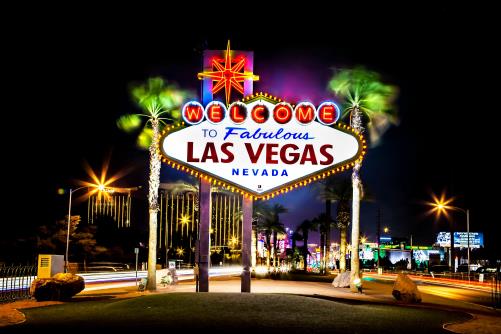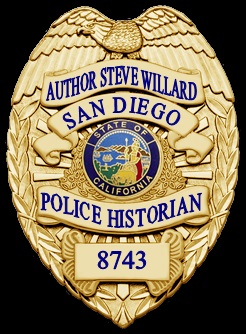The McDonalds Massacre was so incomprehensible 33 years ago that other police departments came here to learn. They wanted to know how SDPD responded and how we investigated such carnage. We gave them a lot. Unfortunately, for all we knew about tactics and homicide investigation, we knew almost nothing about coping with the emotional aftermath.
That lack of knowledge would come to torture Max. He’d grown up in the community. McDonalds was just four blocks from his home. He occasionally ate there. When the “245 now” call was dispatched he was downtown at the DA’s office. Like many cops across the city, he still responded. What he saw would haunt him for the rest of his life. “There was unbelievable carnage. I remember first walking up to the restaurant and seeing those (dead) boys laying right outside the front door of McDonalds.”
During the hot call, Max’s community connection helped other officers orient themselves to a division many had never been to. His connection became even more personal when, later that evening, he drove Etna Huberty to Southern Division to be interviewed by Homicide. Just hours earlier James had told her, “Society had its chance. I’m going hunting humans” Her husband then left the house with an Uzi, a pistol and a shotgun. Etna never called police.
Max ended his shift at 2300 hours. “I went home that night and drank” Max said. “Then I tossed and turned all night unable to sleep.”
SDPD encouraged those at McDonalds to visit the psychologist. Max did the opposite, he shut down. A lifelong Catholic, Max questioned his faith then turned to drinking and emotional withdrawal. Cops of that era were supposed to be “tough.” In reality, the psychological effects of what he’d witnessed could have been a downward spiral leading to a host of personal tragedies.
Perhaps God had another plan.
Max ultimately met Dr. Larry Blum and began to talk about McDonalds. He stopped drinking, returned to church and ultimately met the love of his life. Max junior was born in 1990. Like every parent, Max had aspirations for his son – one of the most important was that he’d never experienced anything like July 18, 1984.
October 1, 2017. Max Jr. was enjoying the Route 91 Harvest Music Festival at Mandalay Bay. It was the second consecutive year he’d attended the event. While he had police friends with him, he didn’t know the crowd was full of off duty cops. It wouldn’t have mattered, to comply with the event rules, no one was armed.
Jason Aldean turn on stage was the crescendo to a weekend of fun. Some people had already left, including Max’s hotel roommate. Suddenly, Max saw people running. Then came loud popping. “My first thought was someone was setting off fireworks” Max recalled. “Then I realized it wasn’t fireworks.”
There was a moment of disbelief. No one knew where the shots were coming from. A gunman must be loose in the crowd. It was inconceivable that a sniper was in the hotel above them no one looked up.
Fight or flight kicked in. Many froze. Max yelled “Run” then began pushing people toward an exit. Bodies were falling around him. Once in the parking lot Max ordered people to take cover behind cars. His shirt and belt were gone – they’d become bandages and tourniquets for the fallen. He needed to keep moving. More people were shoved behind 3 Vegas Metro PD cars.
The massacre took less than 20 minutes.
Like many cops, Max downplays the lives he saved. He shrugs it off as simply wanting to escape. “If I could have run into the middle of the desert I would have. I needed to get out of there. I ran into a nearby hotel bathroom and for the first time I realized I was missing my shirt and was covered in blood.”
Max learned of the casualties blow by blow and each time it got worse. 20 dead. Then 30. Then 40. Hundreds more were wounded. Max had already called his loved ones. “I’m ok” was the consistent message. He finally felt safe when he heard the gunman was dead.
Leaving Las Vegas was emotional. “I just lost it” Max said about the drive out of town.
He returned home and slept for 15 hours.
Calls poured in from his superiors and peers. The messages were consistent, “We’re here for you.”
The calls were welcomed. The worst thing would have to have been to coddle, isolate or treat him like an action hero. Max was a normal guy caught in an ugly event. He needed normal acceptance. SDPD got it right. So did his civilian friends.
Then came time alone. “I could have done more. Why did I live while others died?” Thoughts crept into his head. They’re normal. They’re also destructive.
Max Sr. understood what his son was enduring. He gave him space but also watched him. He wasn’t about to Max Jr. learn what he’d learned the hard way.
Max Jr. began talking about what happened to those who would listen. He went to church one week after the shooting. Everyone was welcoming.
Returning to work was a prospective change. What radio call could top what Max had just survived? He’d quickly learn the answer was none.
Sometimes bad things happen to good people. Mass shootings make no sense so coming to terms with something like Las Vegas isn’t easy. This is why Wellness, Focus and Peer Support is now available for all department members. Spirituality and faith based support is also vital.
Max Verduzco Sr. was 27 when he saw the worst humanity has to offer. Max Verduzco Jr. was 27 when he saw the worst humanity has to offer. By the grace of God both men have important messages about how they emotionally survived.
Surviving the Unthinkable
Officer Max Verduzco was 27-years-old when he saw the worst mass shooting in US history. Officer Max Verduzco was 27-years-old when he saw the worst mass shooting in US history.
July 18, 1984: James Huberty walked into a Southern Division McDonald’s and opened fire. The result was 21 dead, 19 wounded.
October 1, 2017: Steven Paddock opened fire on a crowd of concert goers below his room in the Mandalay Bay Hotel and Casino. The result was 58 dead, 546 injured.
An actuary couldn’t calculate the odds of a father and son, both SDPD officers at the time of the incidents, could ever be involved in tragedies of such magnitude. How they coped with the aftermath is cautionary and inspiring.





